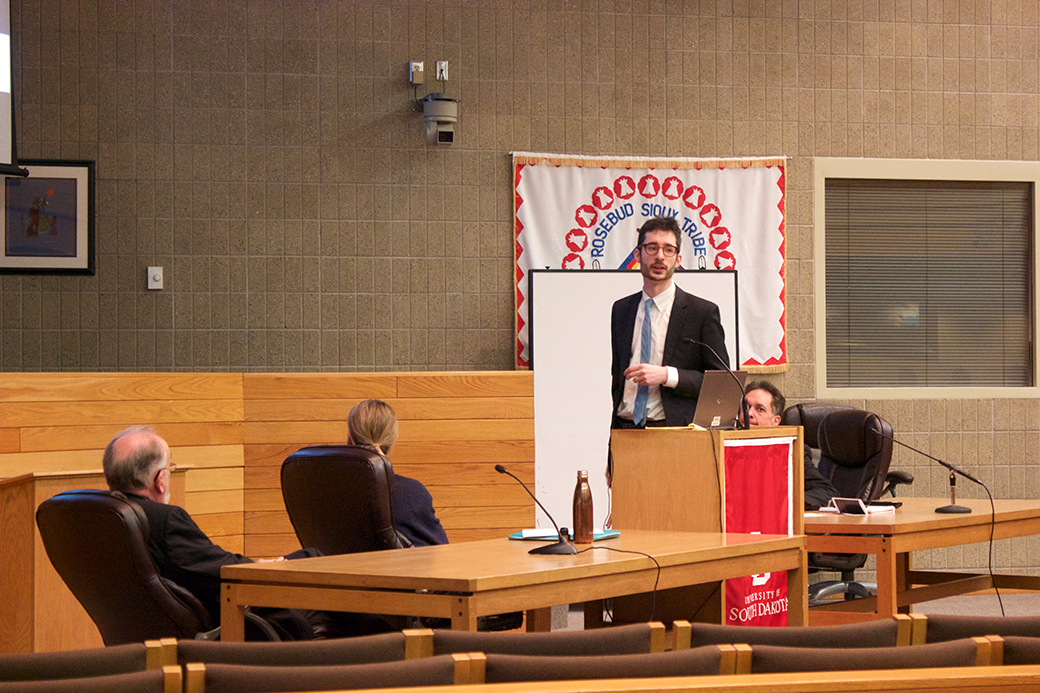
Judicial Voices Project helps bring past wisdom to law students
The South Dakota Supreme Court celebrated its 125 year anniversary this year. To recognize that, USD hosted a presentation for the Judicial Voices Project last week.
The Judicial Voices Project is a way for South Dakota to capture video and pictures of the way today’s justices work for justices in the future.
Chief Justice David E. Gilbertson and BHSU professor John Glover worked with USD’s law school and the I.D. Weeks library to start the project, Dean of USD School of Law, Thomas Gue said.
Gilberston was the one who brought the idea forward.
“I was looking at all of the oil paintings of past justices in the Capitol building, thinking about how that’s almost all we have for records of our history,” Gilbertson said. “Then, one night as I was flipping through the TV channels, I stopped on C-Span and saw that they had made a video interviewing every living U.S. Supreme Court justice.”
Gilbertson said he planned on just taking a regular video camera and making the videos himself, but once he told Glover, the idea grew.
“Some of the video interviews of the retired and current justices were filmed by SDPB,” Gilbertson said.
The project was presented on Thursday at the courtroom of USD’s law school.
Glover’s presentation was about the Judicial Voices Project’s website.
“We are still in the process of uploading the videos,” Glover said. “There is a page describing what Oral History is and a page about the Judicial Voices Project.”
Glover showed some of the videos that had been uploaded already, such as the tour of the Capitol building led by Chief Justice Gilbertson.
After the website tour, Gilberston explained why he wanted to start the project.
“I really wanted to be able to record what our justices are like now for future generations,” he said. “Like how we would like to know the personalities of the Chief Justices in the oil paintings at the Capitol building.”
Glover then introduced a special guest presenter, Michael Benowitz. Benowitz works with the Historical Society of the New York Courts, who also created a video.
Benowitz described how his video representation of the New York Courts was similar to the Judicial Voices Project in South Dakota. He also offered suggestions of ways to keep expanding South Dakota’s new project.
Gue said he was happy USD’s law school hosted the event.
“The Law school is honored and humbled to be a part of this important historical project with the judiciary system in South Dakota,” Gue said. “It’s helpful to present and future lawyers to hear these oral histories.”

